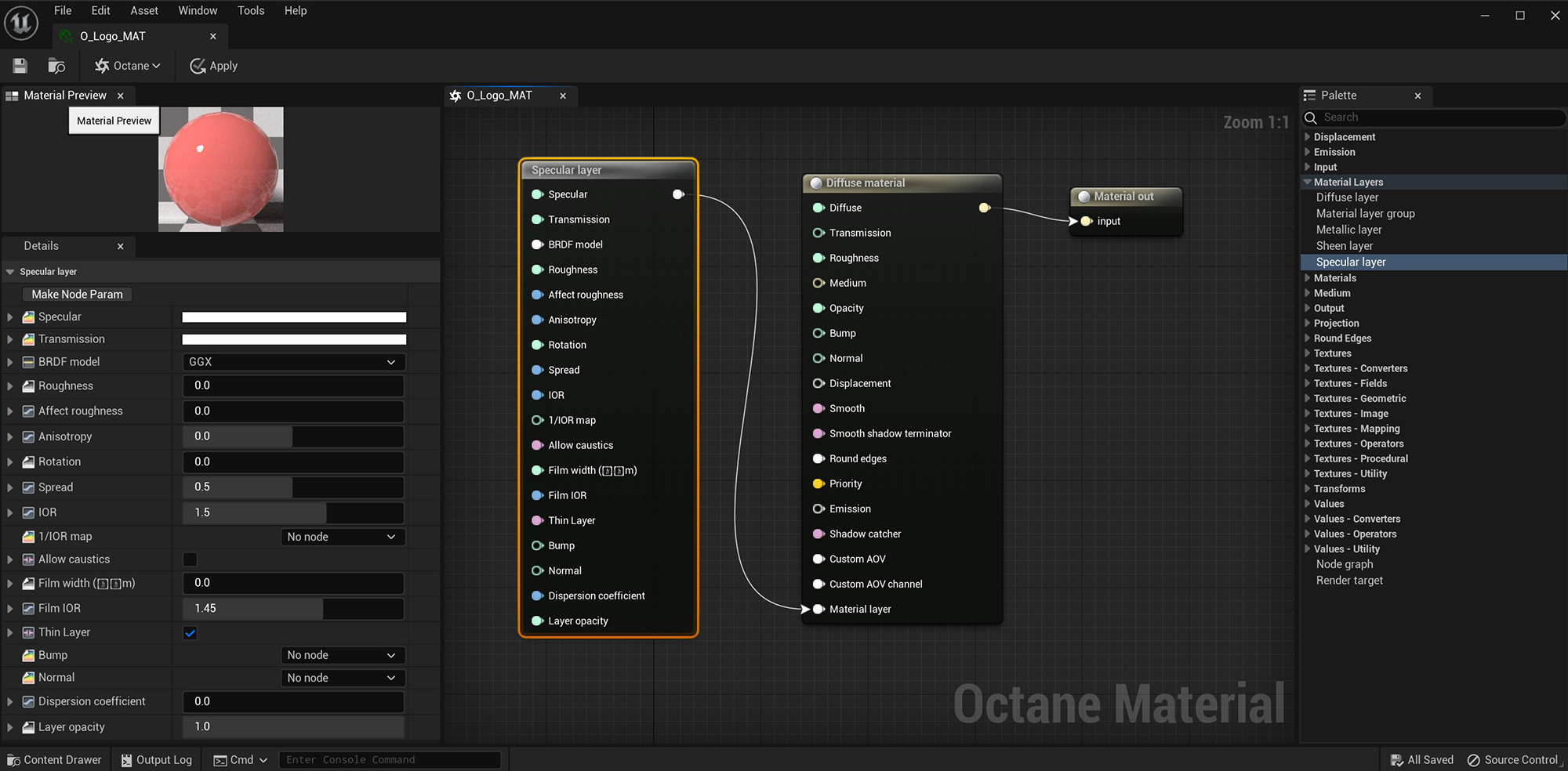
The SpecularAmount of specular reflection, or the mirror-like reflection of light photons at the same angle. Used for transparent materials such as glass and water. layer is used for shiny materials like plastics, or clear materials like glass. You can connect it to an existing MaterialThe representation of the surface or volume properties of an object.'s Material Layer input pin (figure 1), or combine it with other Material Layer types using a Layer Group node.

Figure 1: The Specular Layer node adds reflective highlights to the existing Diffuse materialUsed for dull, non-reflecting materials or mesh emitters.
Specular - The layer's coating color.
TransmissionA surface characteristic that determines if light may pass through a surface volume. - The layer's transmission color.
BRDF Model - This attribute provides four options for determining the overall bidirectional reflectance distribution function (BRDF).
Roughness - Controls the distribution of the reflections on the surface. Higher values will produce a rougher surface reflection.
Affect Roughness - The percentage of roughness affecting subsequent layers' roughness.
Anisotropy - The layer's anisotropy. A value of -1 is horizontal, while 1 is vertical. A value of 0 is Isotropic.
Rotation - The rotation of the specular anisotropic reflection.
Spread - Determines the tail spread of the specular BSDF.
IOR - The specular reflection's or transmission's Index Of Refraction.
1/IOR Map - The Index of Refraction map. Each texel represents 1/IOR. When this is empty, OctaneRender® uses the IOR value. If this is not empty, then this parameter overrides the Index Of Refraction set by the IOR value.
Allow Caustics - If enabled, the photon tracing kernel will create caustics for light reflecting or transmitting through the object.
Film Width - Sets the film coating's thickness.
Film IOR - Sets the film coating's Index Of Refraction.
Thin Layer - Makes the layer very thin so it reflects, or goes straight though the layer.
Bump - Simulates a relief by using a Greyscale texture interpreted as a Height map for the layer.
Normal - Distorts layer normals using an RGB image.
Dispersion Coefficient - This is the B parameter of the Cauchy dispersion model. Increasing this value increases the coloration amount and dispersion in the layer’s transmission and caustics.
Layer Opacity - Controls the layer's opacity with a Greyscale texture.